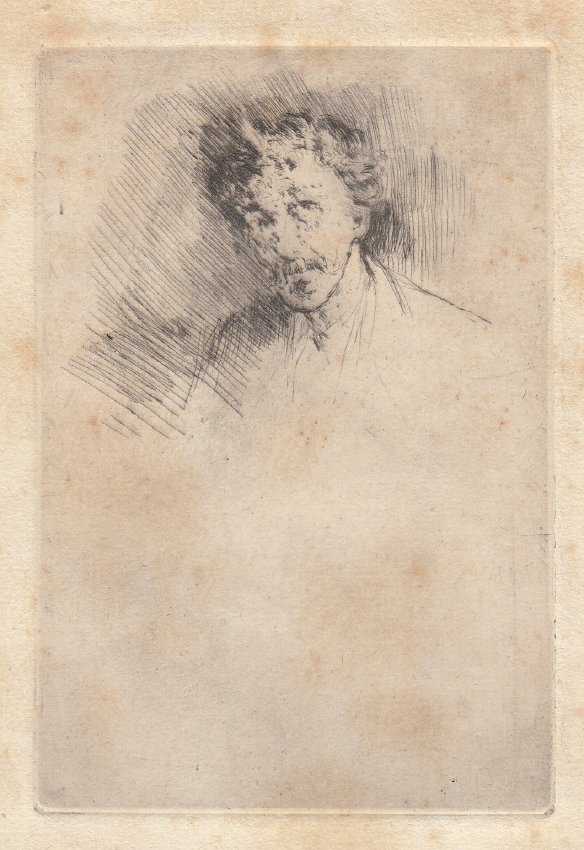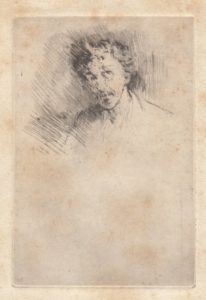Whistler with the White Lock, James Abbott McNeil Whistler, American, 1876-79, etching, from the Max B. and Lalla B. Arnstein Collection, 1962.20.32.
James Abbott McNeil Whistler is most well-known for his prominent role in the highly-criticized, 19th century art movement, Aestheticism. Known today as “Art for Art’s Sake,” Aestheticism rejected many of the traditional, academic views on the function of art. Among Whistler, artist Aubrey Beardsley and writer Oscar Wilde, championed the notion that a work of art need not serve a larger social or political purpose. Art, whether visual or literary, was self-sufficient and beautiful on its own merit.
In this etching, the artist depicts himself with his characteristic white lock of hair. This genetic trait was a result of Waardenburg Syndrome, which both Whistler and his sister shared. Eccentric and confident, Whistler had a way about his appearance that caught people’s attention. His first experiences with etching techniques occurred in the early 1850s when he was employed as a draughtsman with the US Coast and Geodetic Survey. In his more mature artistic career, this medium allowed him to explore line and absence of color.

